What Is Pinking Shears: Uses, Fray Prevention And Craft Ideas
Welcome to our guide on pinking shears! If you’ve ever wondered about these special scissors with the zigzag blades, you’re in the right place. This section will simply explain what pinking shears are, why their blades have that unique shape, and what they are mainly used for. We aim to make it easy for you to understand this handy tool.
1. What exactly are pinking shears?
Pinking shears are special scissors. Their blades are not straight like regular scissors. Instead, they have edges that look like teeth, often called a saw-toothed edge. This design creates a zigzag pattern when you cut fabric or paper. It’s this blade pattern (e.g., zigzag) that makes them look different.
Pinking shears are a type of cutting implement or sewing tool. Their main job is to cut fabric. However, they are also useful for paper and other craft materials. Some people might also call them “zigzag scissors” or, especially when talking about fabric, “serrated-edge shears (scissors with a toothed blade edge).”
2. Why do pinking shears have zigzag blades?
The blades of pinking shears have a “sawtooth” shape, like little teeth. When these blades close, they make a zigzag cut, not a straight line. This happens because the points on one blade fit into the dips or valleys on the other blade as they cut.
While the zigzag pattern can look decorative, that’s not the main reason for this design. The most important reason for the zigzag pattern is to change how the edge of fabric behaves. Specifically, it helps to stop the fabric from unraveling, a problem known as “fraying.” This is one of their unique characteristics: it creates a distinct zigzag edge.
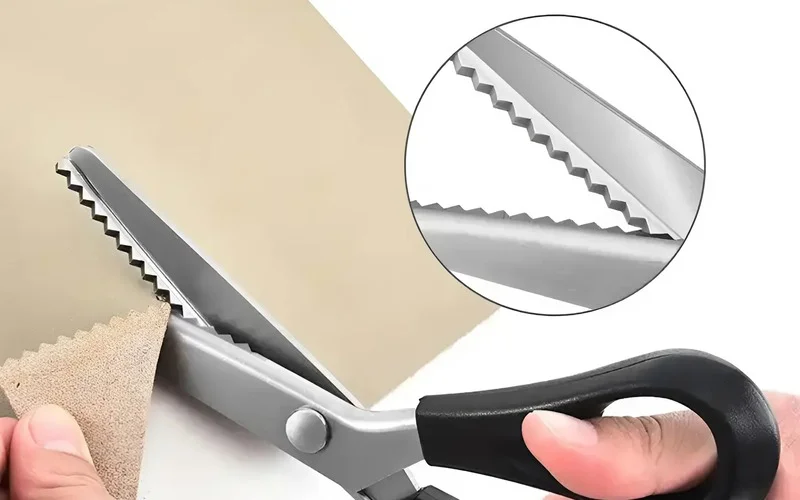
3. The main job of pinking shears: stopping fraying
The biggest reason people use pinking shears, especially with fabric, is to prevent fraying. Fraying is when the threads on a fabric edge come loose. Pinking shears offer an anti-fray solution, making them valuable for many sewing projects due to this primary purpose.
3.1. What is fraying?
Fraying is what happens when threads at the cut edge of fabric come loose. You might see little threads sticking out, making the fabric edge look messy. Over time, a frayed edge can unravel even more.
This usually happens with woven fabrics. Think of woven fabric like a little mat made of criss-cross threads. When you cut it, the ends of these threads can easily pull away if the edge isn’t finished. Some materials, like felt or leather, don’t usually fray because they are not made of woven threads.
3.2. How do pinking shears stop fabric fraying?
So, how do pinking shears prevent fabric fraying? When pinking shears make a zigzag cut on fabric, they create many very short thread ends along the fabric edge. This is different from a straight cut, which leaves longer thread ends that can easily pull out.
These tiny, short thread ends are much harder to pull loose. There’s simply not much length for them to unravel. Also, each little ‘zig’ and ‘zag’ of the cut trims the fabric threads at an angle. Cutting fabric threads at an angle (this is sometimes called cutting ‘on the bias’) makes them less likely to unravel compared to cutting straight along the thread direction.
Because of these reasons, the zigzag edge is more stable and resists fraying much better than a straight-cut edge. This makes it a popular seam finish technique. Many sewers find this zigzag cut significantly reduces fraying on common fabrics, making these shears a go-to tool for minimizing raveling in everyday projects.
3.3. Common uses on fabric
So, where would you actually use pinking shears when you’re working with fabric? Here are some common applications for cutting and finishing fabric edges:
- Finishing seam allowances: inside clothes or sewn items, there’s extra fabric at the seams called seam allowances. Pinking shears are used to cut these edges. This stops fraying and keeps the inside neat. This is very common in home sewing as a seam finish.
- Making fabric samples: if you need to show small pieces of fabric (samples), cutting them with pinking shears gives a clean, tidy fabric edge that won’t get messy.
- Preparing edges for some sewing projects: sometimes, a thick folded hem isn’t wanted. A pinked edge can be a neat way to finish an edge without adding extra bulk. This is useful on some linings or facings in sewing projects, where a pinked edge can reduce bulk.
- Quick fabric edge neatening: if you don’t have a sewing machine with special stitches or a serger (an overlocking machine that trims and encloses fabric edges), pinking shears are a quick, easy, and low-cost way to make fabric edges tidier and less prone to fraying. Many home sewers find pinking shears perfect for quickly tidying up seam allowances. This is also common in textile crafts.
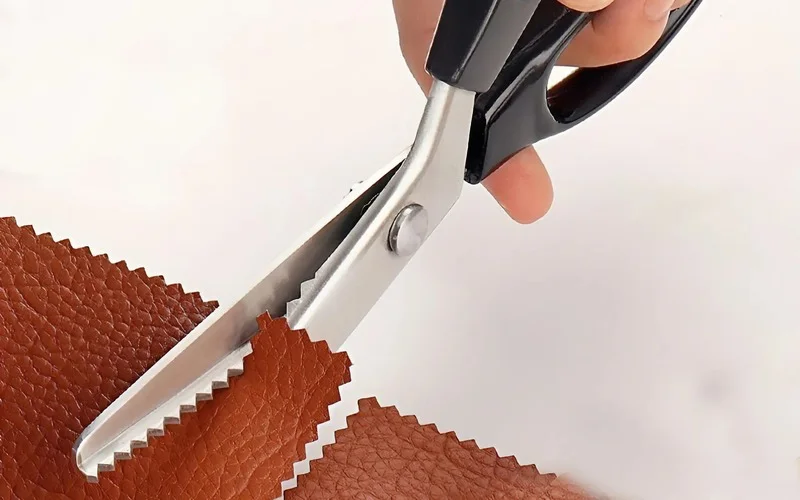
4. Can you use pinking shears on other things besides fabric?
Yes! While pinking shears are famous for fabric, they are also handy for other materials, especially in crafting. Their ability to cut various materials (e.g., fabric, paper, felt) makes them versatile. Pinking shears can add a fun, decorative edge to lots of craft supplies and materials. Here are a few examples of using pinking shears for craft projects:
- Paper crafts: good for making borders on cards, scrapbook pages, gift tags, or other paper decorations.
- Felt projects: felt doesn’t fray much, but a pinked edge on felt shapes (like for ornaments or appliques) adds a nice visual detail.
- Ribbons: cutting the ends of ribbons with pinking shears gives a decorative finish and can also help stop them from unraveling.
- General effect: the zigzag pattern makes craft projects look more special and finished.
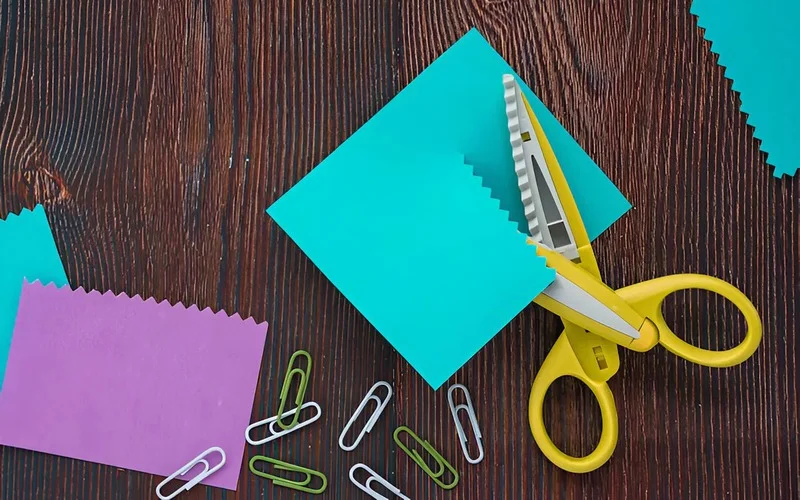
5. Pinking shears vs. regular scissors: what’s the difference?
You might be thinking, “I have regular scissors, why are pinking shears different?” Here’s a quick look at the difference between pinking shears and regular scissors. Both are cutting implements, but they serve different key functions.
- Blade shape: regular scissors have straight blades for a straight cut. Pinking shears, sometimes called pinking scissors, have zigzag or saw-toothed blades for a zigzag cut. This is the most obvious difference.
- Main purpose: regular scissors are for general cutting. Pinking shears are mainly for stopping fabric fraying or creating decorative edges.
- The cut itself: regular scissors leave a plain, flat edge. Pinking shears leave a patterned, zigzag edge that behaves differently on fabric.
- Feel: pinking shears might feel a bit stiffer to use than very light regular scissors due to their more complex blade design.
6. Do I really need pinking shears?
This is a great question! Whether you need pinking shears depends on what you plan to do. They are considered by some as essential sewing tools for beginners.
Pinking shears are most helpful if:
- You often sew with fabrics that fray easily (e.g., many cottons, linens).
- You want a quick, simple way to neaten inside seams without needing a special sewing machine stitch.
- You enjoy paper crafts or working with felt and want to add decorative edges.
There are different methods for finishing fabric edges. Sewing machines might have zigzag or overcasting stitches. Some people use a serger/overlocker for a professional edge finish. Pinking shears offer a simpler, often cheaper, manual alternative. For many beginners in sewing, or for occasional fabric crafters, pinking shears are a great, easy-to-use tool for neater results.
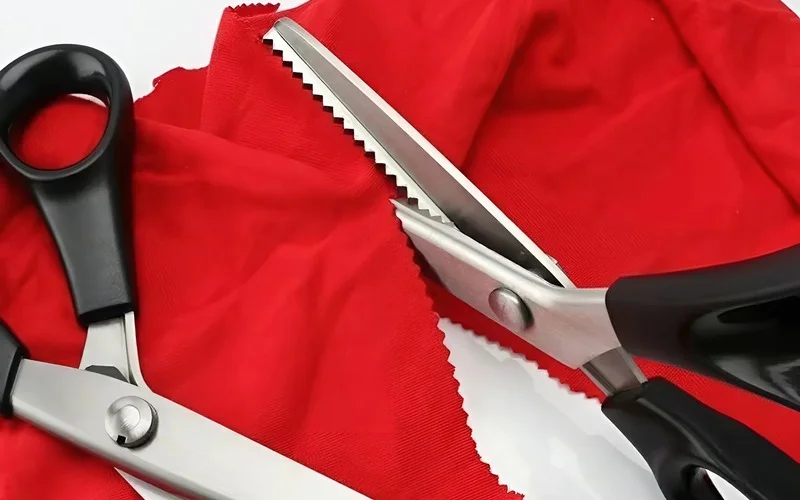
7. A quick tip from Packlove: neat edges for a professional touch
Here at Packlove, we love seeing beautifully finished products! Here’s a small tip related to neat edges: they make items look more thoughtful and professional, especially if for sale or as high-quality gifts. A pinked edge is much better than a raw, fraying edge.
This relates to how to prepare fabric items for adding custom labels. A clean, stable edge, like an internal seam allowance neatly trimmed with pinking shears, provides a much better base for sewing on a brand label, such as a woven label from Packlove.
It keeps the area tidy and helps your branding look its best. From our experience at Packlove, working with many brands on their custom labels and packaging, we know these finishing details greatly improve how customers see a product.
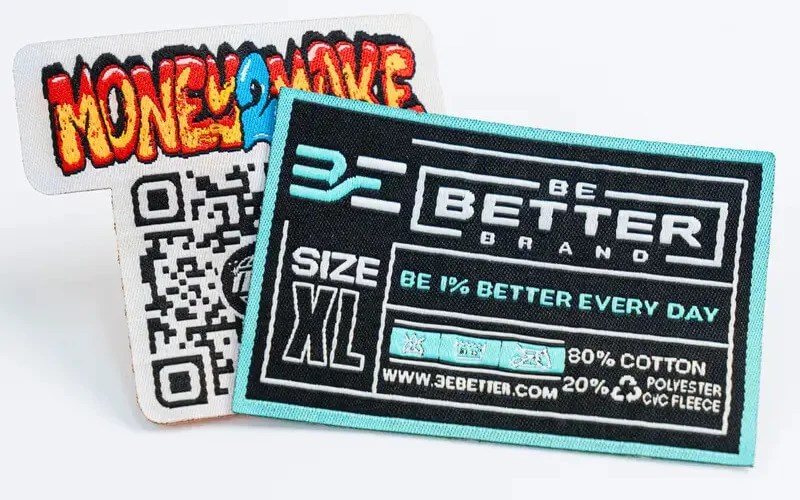
8. Looking after your pinking shears
To keep your pinking shears working well for a long time, here are a few easy care tips:
- Keep them clean: wipe lint and material bits off the blades with a dry cloth after use.
- Use for intended materials: best for fabric, paper, light crafts. Don’t cut wire, very thick cardboard, etc., as this can damage the zigzag blades.
- Store safely: keep in a sewing box/drawer to protect blades. Use a blade cover if they came with one.
9. Frequently asked questions (FAQs)
Still have a question or two? Here are answers to some things people often ask about pinking shears:
9.1. Are pinking shears hard to use?
No, they work like regular scissors. Good quality ones might feel a bit firmer or ‘stiffer’ than basic scissors because the blades need to meet perfectly for the zigzag, but they aren’t difficult.
9.2. What materials should I not use pinking shears on?
Use them on materials like fabric, paper, cardstock, and felt. Avoid hard or thick things like wire, metal, tough plastic, or very thick cardboard. This can damage the special blades.
9.3. Can pinking shears replace a serger?
For just stopping fraying inside a seam, they do a good job. But a serger (or overlocker) is a machine that does more (trims, sews, wraps thread). So, pinking shears are a simple alternative for fray prevention, not a full serger replacement.
9.4. Do pinking shears completely stop all fraying forever?
They greatly prevent fraying and are excellent for many projects. For items washed very heavily and often, a sewn finish (zigzag stitch, serged edge) might be more durable long-term. But for most handmade items, pinking is very effective at reducing fraying.
9.5. Where can I buy pinking shears?
You can usually find them in craft supplies stores, fabric shops, and online stores that sell sewing tools and craft supplies.
Read more:
So, to quickly remind you, here’s why pinking shears are such a handy tool to know about:
- They are great at stopping fabric edges from fraying.
- They create neat, decorative zigzag cuts for crafts.
- They are easy to use, just like normal scissors.
- They offer a simple way to finish seams if you don’t have a serger or special sewing machine stitches.
A useful tool for many sewing and craft projects! We hope this guide helped you understand pinking shears! If you’re ready to give your handmade products a professional finishing touch with custom labels or tags, discover Packlove’s options here.






















